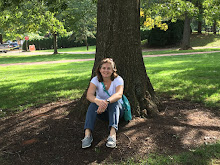The Learning Creative Learning community has been a great example of social learning. This week the discussion began by looking at the goal of free on-line courses. Often the goal is just to deliver information to a larger number of people. However, with LCL the goal is more importantly to bring together a community of people around ideas.
A key way artists, designers and creative thinkers learn in community is through remixing. Artists are continually inspired by and referencing and combining the work of other artists, both contemporaries and figure from art history. Remixing is a way to get to know a work or style, to play with it and make it part of one's own work.
Remixing is also a great form of scaffolding for those getting started. It also leads to building relationships with other makers, to greater connections and collaborations.
Gerhard Fischer and Andres Monroy-Hernandez discussed ways that learning environments can be designed to promote remixing. In the scratch on-line programming community specific features of the site encourage remixing and make sure credit is given to projects that are used as sources for remixes. In the studio at Art at the Center we frequently hear the phrase, "I was inspired by..." during our sharing time. Parents smile at me knowingly; they understand that this is a culture we work to build and celebrate. Children are encouraged to get ideas from other artists, to give credit, to work together and to remix, to take something and make it their own.
Gerhard Fisher also spoke about how to bridge differences in communities; spacial, temporal and conceptual differences. On-line technologies help bridge spacial differences as do artistic reproductions. We have beautiful art books and prints so we can be inspired by other artists without being limited by the availability of the original work. In the art studio, the space is a unifying force and often helps bridge differences in time. In one case, a four year old artist and a ten year old artist carried on a visual conversation through paintings although they attended classes on different days each week and never actually met in the studio. The conversation began when the older artist noticed her younger friends' mixed colors on display and liked their names. She set about creating beach-themed colors of her own and a series of beach images left each week for the other to see began. Conceptually, communities bridge differences in backgrounds, age and skill levels when artists have the opportunity to share process and point of view while creating and in sharing their work over time. Sharing process, challenges, and successes as fellow artists is a great way to build empathy and interest in others.
Environmental and program design can do a great deal to encourage and support program learning. An idea that really struck me was that of courses as seeds. How can we design experiences that become starting points for others? Environments that encourage and even require participant contribution to grow the seed and even to then create seeds of their own for others?
Simple beginning remixes can lead to bigger and deeper connections and relationships, from simple participation to more complex meta-design thinking about how to remix and redesign for new beginnings. Educators work to support layers of participation within learning communities. I liked the idea of thinking of it as a social infrastructure around remixing and collaboration.

Love this. And the idea of classrooms as incubators for remixed ideas. Too often I think we think of schools as places where established ideas are simply to be transferred to those who don't know them. What you describe here is about using those ideas as launch pads for new ones... not once one graduates, but in the moment. I especially love the art/sharing that you described with the students in different classes. Gives me chills!
ReplyDelete